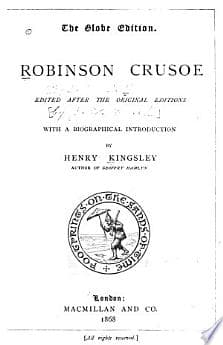- Published on
Robinson Crusoe
- Authors

- Name
- Daniel Defoe
- @search?q=Daniel Defoe

Robinson Crusoe by Daniel Defoe
Summary
"Robinson Crusoe" is a classic adventure novel by Daniel Defoe, first published in 1719. It narrates the life of Crusoe, a young man who defies his parents' wishes to embark on a sea voyage. The story unfolds with Crusoe becoming marooned on a deserted island for 28 years, following a shipwreck.
Key Themes
- Survival and Resourcefulness: Crusoe's ability to adapt and survive in isolation.
- Humanity and Society: Exploring the nature of human society through Crusoe's solitude.
- Religion and Providence: Crusoe's spiritual journey and reliance on divine providence.
Major Plot Points
- Early Life and Rebellion: Crusoe's early life and decision to go to sea.
- Shipwreck and Struggle: The shipwreck that leaves him stranded.
- Island Survival: His initial struggles and eventual mastery of his environment.
- Encounter with Friday: Meeting and befriending Friday, a native man.
- Rescue and Return: The arrival of a ship that rescues them, and Crusoe's return to England.
Analysis
The novel is a reflection on human resilience, the importance of self-reliance, and the impact of isolation on human psyche. It also delves into themes of colonialism and cultural clash through Crusoe's interactions with Friday.
Conclusion
"Robinson Crusoe" is a seminal work in the English literature canon, offering both an exciting adventure story and deep reflections on human nature and society.
